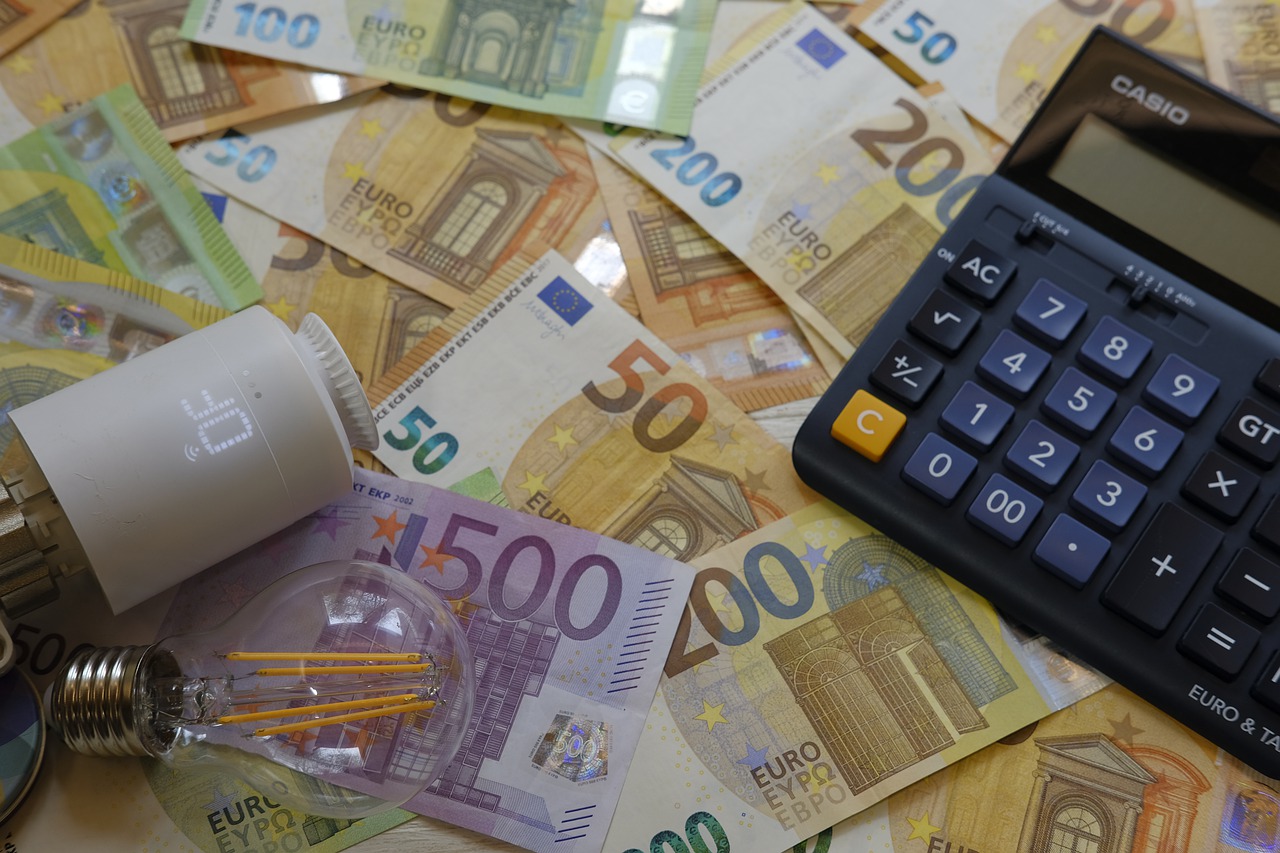EUR to USD Conversion: Key Differences, Risks, Market Trends, and Reliable Sources for 1000 EUR Transactions
GPT_Global - 2025-11-21 07:00:34.0 9
What’s the difference between a spot rate and a forward rate when converting EUR to USD?
When converting currencies in the remittance business, it's important to understand the distinction between spot rates and forward rates. Both are used to determine the exchange rate for converting EUR to USD, but they serve different purposes.
The spot rate refers to the current exchange rate for an immediate transaction. It’s the price at which one currency can be exchanged for another, usually settled within two business days. For example, if you're sending EUR to USD today, the spot rate will be the exchange rate applied at that moment.
On the other hand, the forward rate is used for currency transactions that will occur at a future date. It's based on the current spot rate, adjusted for factors like interest rate differentials between the two currencies. The forward rate helps businesses and individuals lock in a specific rate for future transfers, offering protection against market fluctuations.
In the remittance industry, understanding these rates is crucial for sending money internationally at the best rate, whether for immediate or future transfers. Both rates help users plan their transactions effectively, providing options based on timing and market conditions.

How can I avoid getting scammed when converting 1000 EUR to USD?
When converting 1000 EUR to USD, it’s important to be cautious and aware of potential scams. The remittance market is often targeted by fraudulent entities looking to exploit unsuspecting customers. Here are a few key steps you can take to avoid falling victim to scams.
First, ensure that the remittance service you use is legitimate. Check for proper licensing and regulations, as trusted providers will comply with local and international financial standards. Look for certifications from recognized authorities to ensure your transaction is secure.
Second, compare exchange rates offered by different providers. If an exchange rate seems too good to be true, it probably is. Scammers often offer artificially low rates to lure in customers, only to charge hidden fees later. Transparent and fair pricing is a sign of reliability.
Third, avoid using unfamiliar or unverified money transfer platforms. Stick to well-known and reputable services that have positive customer reviews. If possible, use platforms with secure payment gateways to safeguard your transaction details.
Lastly, always keep track of your transaction, and ensure that you receive a clear receipt or confirmation of your money transfer. Being vigilant can help you protect your hard-earned money when converting currencies.
What is the most reliable source for EUR to USD exchange rate data?
When running a remittance business, staying updated with accurate and reliable exchange rate data is crucial for smooth financial transactions. One of the most commonly searched currency pairs is EUR to USD, as it impacts remittances between Europe and the United States. To ensure businesses and customers are getting the best rates, it is important to rely on trustworthy sources for this information.
The most reliable source for EUR to USD exchange rate data comes from central banks and government financial institutions. For example, the European Central Bank (ECB) regularly publishes official exchange rates that can be used as a reference for businesses and consumers alike. The Federal Reserve also provides vital economic data on currency values, contributing to the overall market understanding of EUR to USD fluctuations.
Additionally, established financial platforms like XE, OANDA, and Bloomberg offer real-time exchange rate data that businesses can integrate into their systems. These platforms often provide both spot rates and historical data, helping remittance services track trends and provide competitive rates to their customers.
By utilizing these reliable sources, remittance businesses can ensure transparency, maintain trust, and provide optimal rates, ultimately strengthening their reputation and ensuring customer satisfaction.
How do stock market trends impact the EUR/USD exchange rate?
Sure! Here's an SEO-friendly article based on your request: ```htmlUnderstanding the relationship between stock market trends and the EUR/USD exchange rate is crucial for remittance businesses. Stock markets often reflect the health of a country's economy, and these fluctuations can significantly impact currency values. When stock markets are performing well, investor confidence rises, strengthening the currency of the nation in focus. For the Eurozone, positive market trends can lead to a stronger EUR, while for the U.S., strong stock market performance can boost the USD.
For remittance businesses, these fluctuations are important because they directly affect the exchange rate when sending or receiving funds. A stronger EUR means customers sending money from the Eurozone may get more USD for their euro, benefiting both the sender and the receiver. Conversely, if the U.S. stock market performs well, the USD could strengthen, meaning lower amounts of USD might be exchanged for euros.
Monitoring stock market trends helps remittance companies anticipate exchange rate movements, offering more competitive rates and ensuring better value for their customers. As the market continues to evolve, staying informed allows businesses to adapt to changes and provide optimal services to customers worldwide.
``` This article discusses how stock market trends can influence the EUR/USD exchange rate and its implications for remittance businesses.What should I consider when converting large amounts like 1000 EUR to USD?
When converting large amounts, like 1000 EUR to USD, there are several important factors to consider to ensure you get the best value and minimize unnecessary costs. The first thing to look at is the exchange rate. Currency rates fluctuate constantly, so it's essential to monitor these changes to choose the optimal time for conversion.
Next, consider the fees associated with the transaction. Remittance services often charge a flat fee or a percentage of the total amount. Comparing fees across different providers can help you save a significant amount, especially for larger sums like 1000 EUR. Be sure to check if there are hidden charges in the fine print.
Another factor to take into account is the transfer speed. Some services offer instant transfers, while others may take longer. If time is a critical factor for your remittance, make sure to choose a service that suits your needs.
Lastly, ensure that the service you choose is reliable and trustworthy. Look for customer reviews and ratings to ensure the service is reputable and provides good customer support. By keeping these factors in mind, you can effectively convert large amounts like 1000 EUR to USD while minimizing costs and maximizing convenience.
How do currency reserves influence the EUR/USD exchange rate?
The EUR/USD exchange rate is heavily influenced by a variety of factors, including currency reserves. Currency reserves, held by central banks or monetary authorities, act as a buffer in times of economic instability. For the EUR/USD pair, reserves in euros or dollars impact the stability and liquidity of the currencies in the market.
When a central bank holds large reserves of a particular currency, such as the euro or the U.S. dollar, it can influence the exchange rate by either increasing or decreasing the supply of that currency. For example, if the European Central Bank (ECB) accumulates more reserves in dollars, it may signal strength in the EUR/USD pair. This can affect global remittance rates, as businesses and individuals alike pay attention to shifts in currency value.
Currency reserves also provide an insight into the economic health of a region. A higher level of reserves can indicate economic stability, often leading to a stronger currency. For remittance businesses, understanding how reserves impact the EUR/USD exchange rate is essential for optimizing transfer costs and predicting market trends.
In conclusion, currency reserves play a significant role in shaping the EUR/USD exchange rate, which directly affects remittance businesses by influencing transaction costs and overall currency stability.
How does the Euro’s strength affect the value of 1000 EUR in USD?
The strength of the Euro (EUR) plays a significant role in determining the value of 1000 EUR when converted to US dollars (USD). When the Euro strengthens against the USD, it means that 1000 EUR will be worth more in USD, allowing remittance senders to transfer more value for less EUR. On the other hand, when the Euro weakens, the value of 1000 EUR in USD decreases, meaning recipients in the US will receive less.
For individuals sending money abroad, this fluctuation in the Euro's strength can directly impact the amount of money their loved ones receive. Those in the remittance business must stay aware of the Euro's performance to help clients optimize their transfers. Timing the transfer correctly can significantly impact the amount of USD recipients will get, making it crucial for senders to monitor currency trends.
To maximize remittance value, customers should consult with remittance providers about the best times to send money based on the Euro’s performance. Understanding how currency fluctuations impact the value of 1000 EUR in USD helps individuals make informed decisions, ensuring that their transfers are as efficient and valuable as possible.
What’s the average rate of exchange for EUR to USD over the past year?
```htmlThe average exchange rate for EUR to USD over the past year has seen fluctuations that can impact international remittance services. For businesses and individuals sending money across borders, understanding these trends is essential for managing costs effectively. Remittance services often rely on stable exchange rates to offer competitive pricing to customers, and changes in currency values can affect the amount recipients receive.
Over the past year, the EUR to USD exchange rate has varied due to global economic factors such as inflation, interest rates, and geopolitical events. On average, the exchange rate has hovered around 1.05 to 1.10, although it has experienced moments of volatility. This variability underscores the importance of tracking currency movements when sending remittances.
For remittance businesses, staying informed about currency trends is crucial to provide customers with the best possible rates. By offering competitive exchange rates, companies can attract more clients who are looking to transfer money efficiently. In a volatile exchange rate environment, providing transparency and reliable services can help build trust with customers seeking to send funds internationally.
```
About Panda Remit
Panda Remit is committed to providing global users with more convenient, safe, reliable, and affordable online cross-border remittance services。
International remittance services from more than 30 countries/regions around the world are now available: including Japan, Hong Kong, Europe, the United States, Australia, and other markets, and are recognized and trusted by millions of users around the world.
Visit Panda Remit Official Website or Download PandaRemit App, to learn more about remittance info.



